
Most certainly, in 1 million years humans will look differently than today. That is – of course if we will still be alive as a species.
As we’ve written in our articles about the future of Earth, there is a good probability that we will go extinct, especially if we’re looking at such a distant future.
However, if we will be alive – we will merge with technology in one way or another, which will be humans’ primary driver of change.
We touched on this topic in our article Future Evolution of Humans, where we predicted that there would be no more Homo Sapiens but something that we called Homo Techiens.
Besides technological impact, there are other likelihoods.
One possibility is that humans will continue to evolve to become taller and more slender. As people become more reliant on technology, physical strength, and endurance may become less important, leading to a decrease in muscle mass and bone density.
Additionally, humans may develop longer limbs and fingers to better manipulate tools and technology.
There are many other potential aspects of change in humans in 1 million years.
In this article, we will explore all possibilities.
So, join us as we delve very deep in this one.
First, we’ll explore evolutionary aspects and some historical comparisons and then we’ll share more details about technological augmentations and real changes in the physical look of humans.
Interesting fact: The average height of humans has already increased significantly in the past century, with the average height in the United States increasing by 2.5 inches since the early 1900s. However, this increase in height didn’t happen because of evolution, but most likely because of nutrition.
Evolutionary Biology
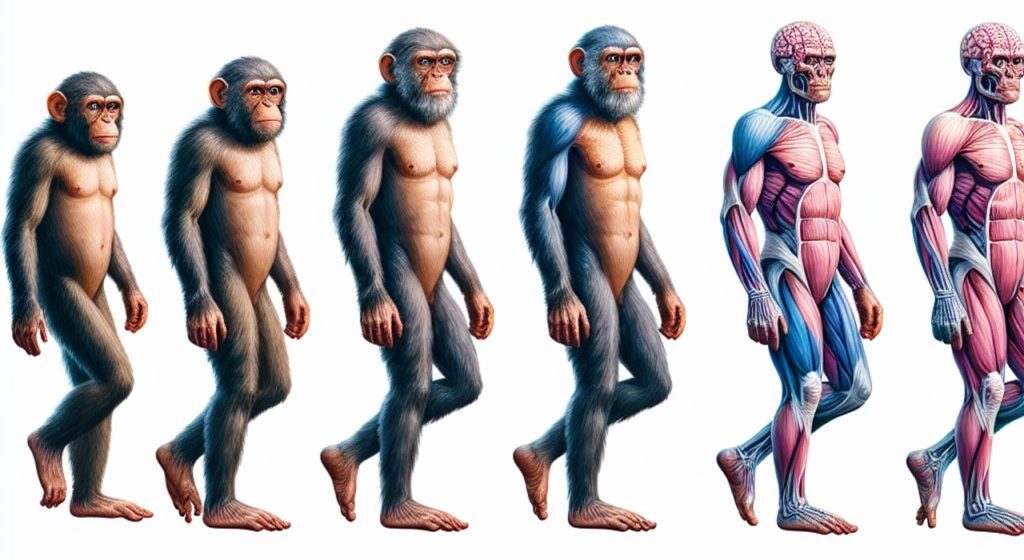
Natural Selection and Future Humans
Natural selection is the process by which certain traits become more or less common in a population over time due to their impact on reproductive success.
As the environment changes, so do the selective pressures that shape the traits of future generations.
In the future, we can expect that humans will evolve to better adapt to their changing environment.
For example, humans living in high-altitude areas may develop a larger lung capacity to better utilize oxygen.
On the other hand, if technological advancements continue and a sedentary lifestyle becomes even more pronounced, well, then we can expect that humans will slowly start to lose muscle mass.
Imagine a standard picture of aliens that we have today. Tiny legs, tiny body, tiny hands, and large head, right?
Well, humans could evolve into something similar in 1 million years. As humans will use more and more computers and virtual reality devices, so they will stop using their bodies.
This will inevitably lead to significant changes in our bodies. And 1 million years is certainly a long enough period for all of these changes to become noticeable.
Remember, we homo sapiens evolved some 250-300 thousand years ago. So 4 times this period and we could easily evolve into something rather different.
And as mentioned – the first thing that comes to mind is bigger heads.
However, with bigger heads comes another problem. The natural process of birth.
Namely, any substantial change in head size would affect the ability of a baby’s head to pass through the pelvis during birth.
So there lies the first problem.
However, in the future, pregnancies will look completely different, and most likely no woman will go through the standard process of pregnancy, labor, and birth.
Therefore, our bodies will change in that segment also. Perhaps we will become completely sexless beings.
Judging by what is happening with human sexuality in recent years it would not come as a surprise that humanity will become a sexless species altogether.
We’ll cover more on that later, but for now, let’s try to make a comparison with human-like beings that lived 1 million years ago.
How Did Humans Look Like 1 Million Years Ago?

One million years ago, humans looked quite different from modern humans. Our ancestors had a more prominent brow ridge, a flatter face, and a larger jaw.
They were also shorter and more robust, with a more pronounced musculature. These traits were adaptations to their environment and way of life, which included hunting and gathering, as well as defending themselves against predators.
Additionally, one million years ago, there were several human-like species that coexisted with our ancestors. These included Homo erectus and Homo habilis, both of which had distinct physical and behavioral traits.
For example, Homo erectus had a larger brain than earlier hominids and was the first species to migrate out of Africa.
And so, does this give us any clues on how we will look in the distant future?
Not really.
Namely, as mentioned our looks will mostly be impacted by technology.
So, let’s take a look at more recent history.
How Did Humans Look Like 100 Thousand Years Ago?

One hundred thousand years ago, humans were anatomically similar to modern humans. However, they had some subtle differences, such as a more pronounced brow ridge and a larger nose.
These traits were likely adaptations to their environment, which included living in colder climates and dealing with increased exposure to sunlight.
And so, based on those two comparisons it is difficult to predict exactly how humans will evolve in the future, as it depends on a complex interplay of genetics, environment, and culture.
However, some scientists predict that humans may continue to evolve smaller jaws and teeth due to changes in diet, as well as larger brains and more complex social behaviors due to increased reliance on technology and communication.
Okay. So now we briefly examined history trying to make some predictions based on how the homo genus changed during the years.
But history will not repeat itself, but it will rhyme in some aspects. As already mentioned several times, technology will have the largest impact on how humans look.
Therefore it’s time to dive deep into this segment.
Interesting fact: The human brain has been shrinking in size over the past 10,000 to 20,000 years, possibly due to changes in diet and lifestyle.
Technological Augmentation
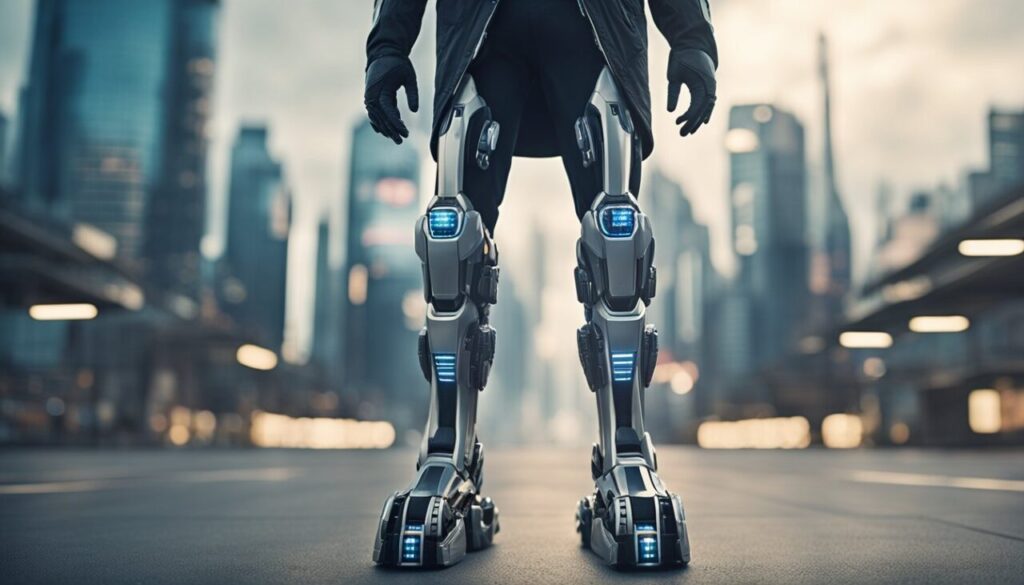
Cybernetic Enhancements
In the future, humans will most likely choose to enhance their physical abilities through cybernetic implants.
These implants could improve strength, speed, and durability. Some individuals may even opt for enhancements that allow them to see or hear beyond the normal human range.
While these enhancements may seem like science fiction, some early prototypes already exist.
Probably there will be so many cybernetic enhancements that humans of today and humans of the future will not be comparable at all.
Interesting fact: In 2019, a man in the United States became the first person to receive a mind-controlled prosthetic arm that allowed him to feel sensations in his fingers.
Genetic Engineering

Advancements in genetic engineering may allow humans to manipulate their DNA to improve physical and mental traits. This technology could be used to eliminate genetic disorders, enhance intelligence, and increase lifespan.
One potential modification could be increasing muscle mass and bone density to create stronger and more resilient individuals.
Another modification could be altering skin pigmentation to better adapt to different environments and protect against harmful UV radiation.
However, the ethical implications of genetic engineering are still being debated, and it is unclear how society will handle these advancements.
Most likely certain individuals (rich individuals), will take advantage of this technology and make supermen out of themselves and their children.
And this is not good as it will create even bigger differences between rich and poor.
Interesting fact: In 2018, scientists successfully edited the DNA of a human embryo to remove a genetic mutation that causes heart disease.
Brain-Computer Interfaces
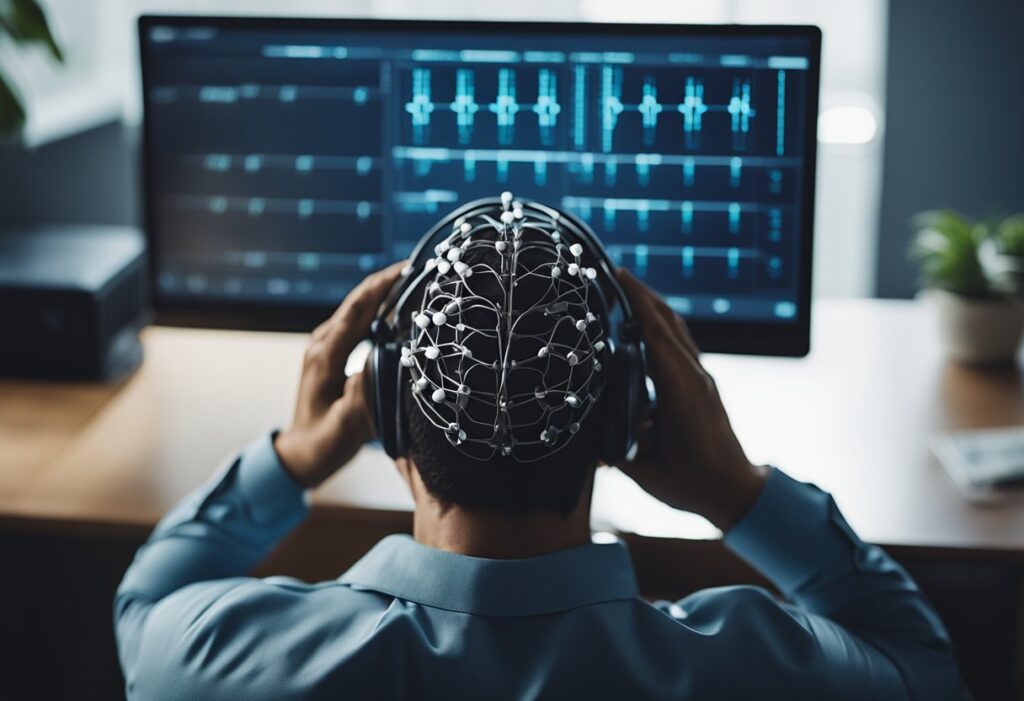
In the next 1 million years, every human on Earth will have advanced Brain-computer interfaces (BCIs).
This technology will be used to control prosthetic limbs, type on a computer, and most likely read minds.
But besides technological advancement and genetic engineering, people will need to adapt to a completely different environment.
Namely, as we’ve written in our article, “What Will Earth Look Like In 1 Million Years,” the Earth climate will change significantly.
Not only that, but in the next 1 million years we can say with 100% certainty that people will migrate to other planets or even other galaxies.
So, therefore let’s explore this idea in more detail and how it will impact the physical look of humans.
Environmental Adaptations

Space Colonization
As humans continue to explore and colonize space, they will certainly face new environmental challenges. In order to survive in the harsh conditions of space, humans will need to adapt their bodies to withstand radiation, low gravity, and extreme temperatures.
One possible adaptation could be the development of thicker skin and stronger bones to protect against radiation and the effects of low gravity.
Additionally, humans may evolve to require less oxygen and food in order to survive on long space journeys.
Climate Change Response
As the Earth’s climate continues to change, humans will need also to adapt to new environmental conditions in order to survive.
One possible adaptation could be the development of more efficient ways to regulate body temperature, such as increased sweat gland density or changes in skin pigmentation.
Additionally, humans may evolve to require less water and food in order to survive in areas with limited resources.
Interesting fact: Some researchers believe that humans may have already begun to adapt to climate change, with populations in hot regions evolving to have longer, thinner bodies in order to dissipate heat more efficiently.
Conclusion
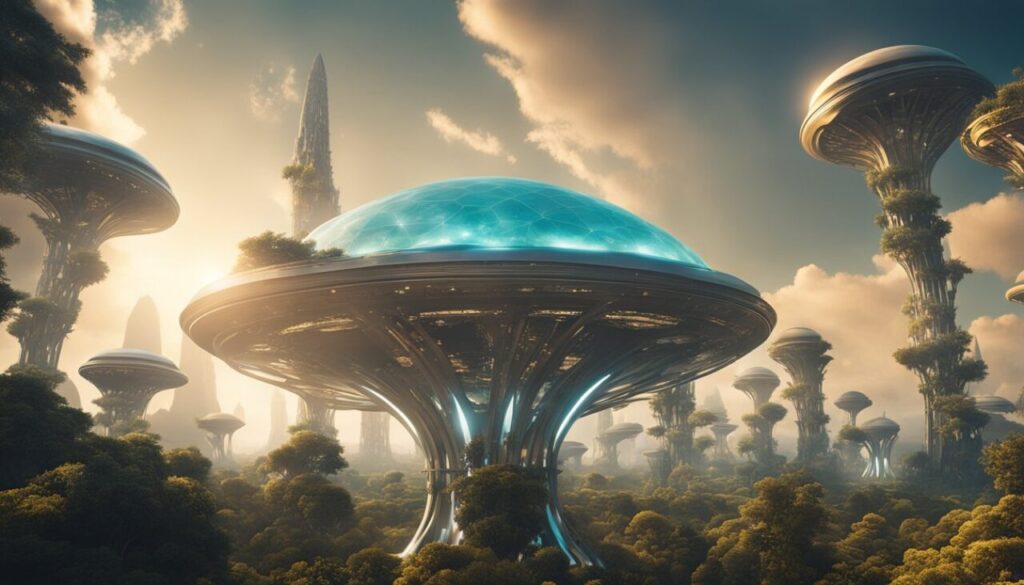
In conclusion, it is impossible to predict with 100% certainty what humans will look like in one million years.
However, based on the current trends in evolution, it is likely that humans will continue to evolve and adapt to their environment.
One possible scenario is that humans will become taller and leaner, with longer limbs and fingers, to better adapt to a warmer climate.
Another possibility is that humans may develop larger heads and brains, as intelligence is a highly valued trait in human society.
It is also likely that humans will evolve to become more resistant to diseases and live much longer and healthier lives. This could be achieved through genetic modifications or through natural selection.
Think about people living to be 1000 years or more.
And while this sounds like science fiction it will most likely become reality.
And so in the end, let’s unleash our imagination completely and try to describe the top 10 physical characteristics of humans in 1 million years:
1. Enhanced Cognitive Abilities
Humans will likely have significantly enhanced cognitive abilities due to genetic engineering and integration with advanced AI. Brain-computer interfaces will allow for direct interaction with technology and enhanced memory, learning, and problem-solving capabilities.
2. Adapted Physiology for Space Travel
To cope with the challenges of space travel, such as microgravity and radiation, humans might evolve or engineer themselves to have denser bone structures, more efficient circulatory systems, and enhanced DNA repair mechanisms. Muscle atrophy in low-gravity environments may be countered by engineered muscles that maintain strength and mass.
3. Radiation Resistance
Exposure to cosmic radiation in space and increased solar radiation on Earth might lead to the development of enhanced DNA repair mechanisms or even new biological structures that protect against radiation. The skin may become thicker or have built-in radiation-shielding properties.
4. Integrated Technological Augmentations
Humans will likely have a variety of technological augmentations, such as embedded sensors, augmented reality interfaces, and cybernetic limbs and organs. These enhancements will improve physical capabilities, communication, and interaction with the environment.
5. Thermal Adaptations
With a hotter Earth, humans might develop adaptations to better regulate body temperature. This could include more efficient sweat glands, changes in skin pigmentation to reflect or dissipate heat, and even internal cooling systems facilitated by nanotechnology.
6. Altered Respiratory and Circulatory Systems
To adapt to various environments, from high CO2 levels on Earth to the thin atmospheres of other planets, humans might evolve or engineer more efficient respiratory and circulatory systems. This could include increased lung capacity, more efficient oxygen utilization, and even the ability to extract oxygen from water.
7. Symbiotic Relationship with Microbes
Humans may develop a more symbiotic relationship with microbes, using them for enhanced digestion, detoxification, and even synthesis of necessary nutrients. This could lead to a highly adaptable digestive system capable of processing a wide variety of foods and environments.
8. Aesthetic and Functional Diversity
Human appearance could become highly diverse, with aesthetic and functional modifications becoming common. People might choose to alter their appearance for cultural or personal reasons, leading to a wide variety of forms, from enhanced beauty standards to entirely new physical features.
9. Communication Evolution
The language might evolve beyond spoken words to include direct thought transfer via brain-computer interfaces. This could lead to instantaneous, nuanced communication that transcends current linguistic limitations, enabling a deeper understanding and collaboration.
10. Extended Lifespan and Healthspan
Advances in medicine, genetics, and nanotechnology will likely extend human lifespan and healthspan dramatically. Humans could live for hundreds if not thousands of years, with most age-related diseases being eradicated. Regenerative medicine might allow for the replacement of damaged tissues and organs, keeping humans youthful and healthy for much longer periods.
And so in the end let’s try to visualize those future humans:
Visualizing Future Humans
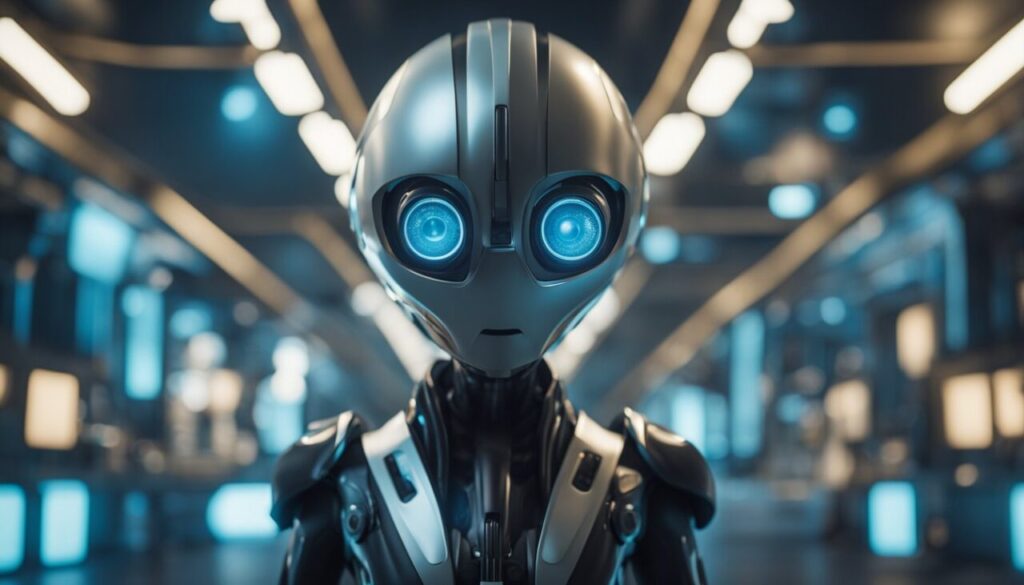
- Body Structure: Slimmer, more streamlined bodies with less muscle mass but enhanced muscle efficiency.
- Skin: Thicker, more resilient skin with possible reflective properties and built-in radiation protection.
- Eyes: Larger, more adaptive eyes capable of seeing in a broader spectrum of light.
- Hair: Possibly minimal or replaced by other forms of thermal regulation.
- Hands: More dexterous, with potential integration of multitools and enhanced sensory capabilities.
- Brain: Larger, with external augmentations for cognitive enhancement.
- Internal Systems: Highly efficient organs and symbiotic microbial systems for optimal health and adaptability.
Note: If you’re interested in similar articles, you can check:
- What would happen If The Moon disappeared?
- What Would Happen If The Moon Exploded?
- What Would Happen If Jupiter Disappeared?
- What Would Happen If You Fell Into A Black Hole?
- What Would Happen If The Earth Stopped Spinning?
- What If Everyone On Earth Jumped At The Same Time?
- What would happen if we stopped fishing?
- What would happen if water disappeared on Earth?
- What would happen if lying never existed?
- What would happen if everyone was naked?
- What would happen if gravity suddenly disappeared?
- What would happen if everyone stopped having children?



























